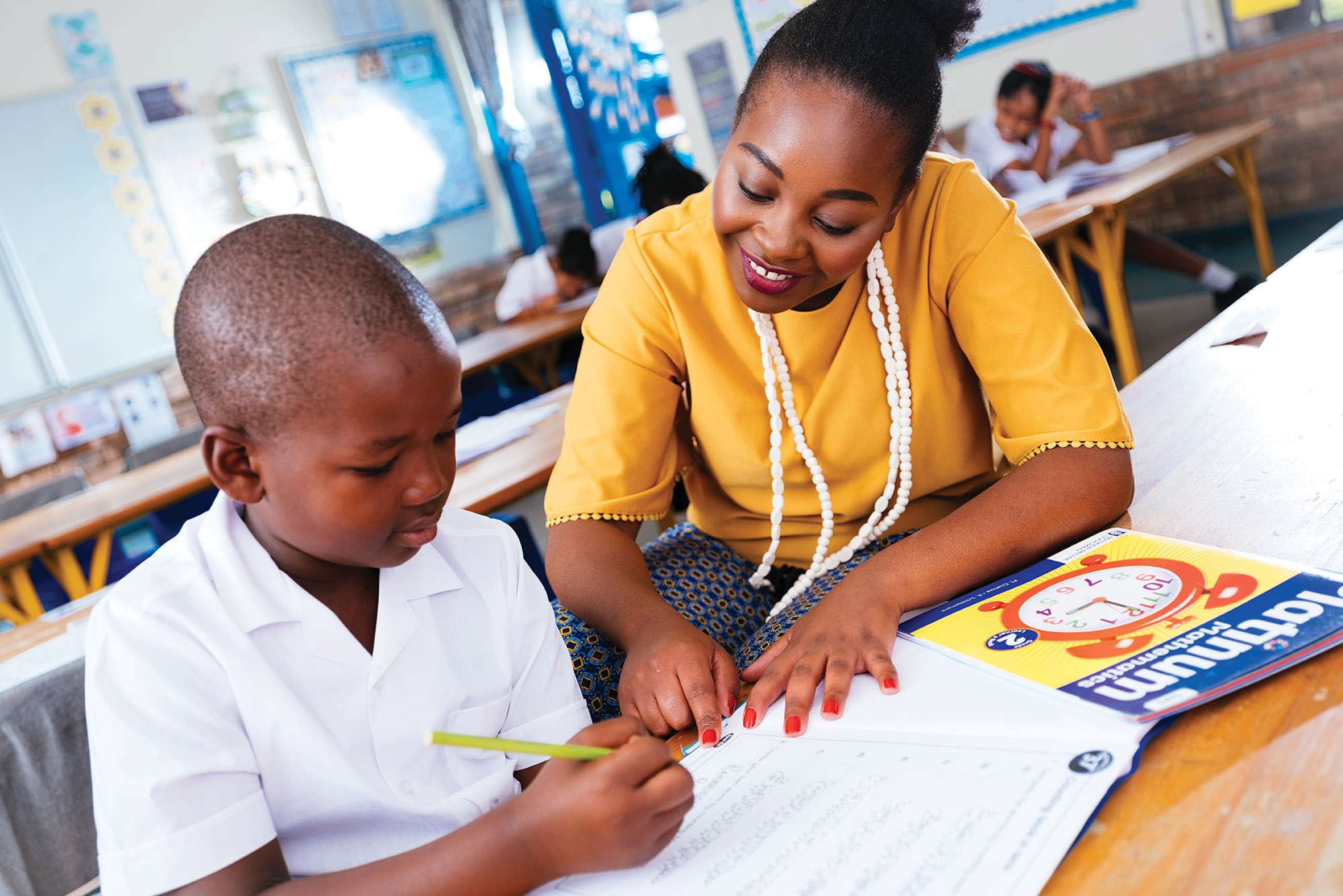Teaching mathematics is more than the sum of its parts
Benadette Aineamani, Director of Products and Services for Pearson Africa was interviewed on Channel Africa by Zikhona Miso. Aineamani discussed some reasons for the decline in mathematics performance in South Africa, and why mathematics is important. Through her research, and in writing her PhD thesis on the subject, Aineamani investigated the role of the teacher in developing learners’ mathematics discourse and understanding. She offers a few solutions around teacher and learner competency and tips for improving mathematics teaching and learning.

Coding. Robotics. Artificial Intelligence. Data analytics. These are just some of the words that might flash in the mind of a young high school learner as they dream of their future career. In this fourth industrial revolution, the digital age has flung wide the doors of possibility. For many young South Africans, these doors remain shut tight as their inability to pass mathematics holds them back.
According to Benadette Aineamani, Director of Products and Services for Africa at Pearson, the state of mathematics education in South Africa is declining. In 2019, only 54% of matriculants who wrote a mathematics exam passed it. This is down from a pass rate of 58% in 2018. Adding to this, only 2% of the 2019 mathematics passes were distinctions.
Aineamani explains, “The way that mathematics as a subject is scaffolded means that learners need to progress from one concept to another. If they don’t grasp a concept, they are then left behind with little hope of catching up on their own. So they fail.”
Aineamani believes too many of our learners are already one or two grades behind. “With the time lost to the COVID-19 lockdown, the South African education system is in dire need of helping its learners to catch up if they ever hope to qualify for admission into higher education. Mathematics is so important, and every year it becomes more so,” she says.
Through her research, and in writing her PhD thesis on the subject, Aineamani investigated the role of the teacher in developing learners’ mathematics discourse and understanding – the topic of her thesis.
“There is an issue around teacher and learner competency in mathematics and most of it comes down to teaching mathematics with and for understanding. If a learner doesn’t understand mathematics, then the teacher will need to draw on various strategies in order to help the learner to grasp concepts in a way that leads to conceptual understanding.”
Through Pearson, Aineamani uses her knowledge of mathematics teaching and learning to provide much-needed training for teachers and schools across the country. In her extensive research, she has discovered three critical problem areas that may be taken for granted, but are a reality in many mathematics classrooms.
Begin with the intended object of learning
In all the hundreds of lessons that she observed in doing her research and training teachers, the biggest issue seems to be one that takes place right at the beginning of every lesson.
“I have seen so many teachers walk into a classroom, open the textbook and just start teaching. And they do this without actually introducing the lesson objectives. With no context, the learners struggle to focus and generally don’t understand what is being conveyed to them. It is not easy to believe this but it is the reality on the ground.”
Aineamani believes that lesson preparation is crucial, and lessons should be taught in relation to the learners’ prior knowledge.
She says that all lessons should begin with an announcement of the intended object of learning to avoid confusion on what learners need to focus on and what they need to ignore. She says there is a need to make mathematics teachers aware of the impact of starting a lesson without announcing their intention(s). In a discovery lesson, the teacher should find an appropriate way of ensuring that the intended object of learning is embedded in the discovery activity and hence kept in focus during the lesson,” says Aineamani.
The power of examples is found in translation
Aineamani says that teachers should embrace the power of examples and what they bring into the classroom. She says, “Teachers should not just open a text book and start going through the examples written in the text book, without considering the learners and their realities in relation to the prior knowledge that is needed to engage with the examples in the textbook.”
According to her, some of the examples provided in some text books often do not engage the learners exhaustively. “Teachers should use all available resources to customise examples for their learners and translate that knowledge in a way that their learners will understand.”
Many voices in the mathematics classroom
“If you are a teacher in a mathematics classroom, are you the only voice in the room?” questions Aineamani. “If you are the only voice that is heard in the classroom and provide absolute authority, are you really allowing learners to engage in a subject in a way that they understand?”
Part of the problem Aineamani has discovered in our mathematics classrooms is the use of the teaching method which she calls ‘presentation mode’. “Mathematics teachers need to engage with their learners and allow learners to communicate their mathematics reasoning. Let the learners get the answer wrong and then guide them by drawing on their prior knowledge and experiences, to assist them to ‘see’ why their answer is wrong.”
An educator on a mission
With a passionate history for education, Aineamani has dedicated her life to improving education at a school level. Through Pearson, she has been working with educators in different provinces in South Africa to find ways of identifying and helping schools improve their mathematics competencies.
“With so much school time already lost to COVID-19, we now have an even more desperate need to develop targeted interventions that will help our teachers and our learners to catch up. This is our mission at Pearson and one that we hope schools across the country will take us up on” says Aineamani.

